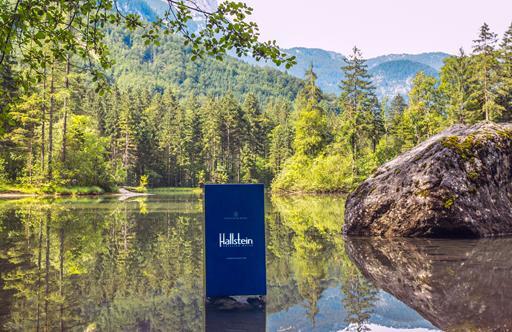The Land of the White Sands
Paul Richardson embarks on a journey to Brazil’s remote northeast, home to the awe-inspiring white sand dunes of Lençóis Maranhenses, exquisite culinary treasures and a fascinating new hotel concept
Disappointment is a fact of life – and, often, of travel, especially when the destination is a place you’ve longed to see for years. Coming to the Lençóis Maranhenses earlier this year, I prepared myself for a landscape that might not live up to the hype. I shouldn’t have. The mesmerising panoramas of this coastal region of northeastern Brazil – in which, for a few months a year, thousands of freshwater lagoons appear among rolling white-sand dunes – have an otherworldly beauty that never fails to bewitch everyone who sets eyes on them.
For a wonder of the world, you might say the Lençóis have spent a good length of time under the radar. Until a few years ago, even many Brazilians had no idea the “sheets” – so called because of the dunes’ resemblance to billowed and crumpled white bedlinen – even existed, though clued-up travellers might have heard whispers on the grapevine. Amazingly, my 2003 copy of The Rough Guide to Brazil makes no mention whatsoever of this incredible place – which says something about how little-known it was even twenty-odd years ago.
Even today, with asphalt roads where once there were none, getting there takes time and effort. From São Paulo, it’s a three-hour flight to São Luís, the crumbling colonial capital of Maranhão, the poorest and second largest of the historically disadvantaged states making up what is collectively known in Brazil as “o nordeste” (the northeast). On the last stretch of the four-hour car journey east out of São Luís, signs advertise the latest new-build condomínios offering a slice of paradise beside the dunes. One large billboard proudly announces that as, from July 2023, this overlooked and underfunded state boasts, in the Lençóis Maranhenses National Park, Brazil’s newest Unesco World Heritage Site.

It’s as if the Lençóis were making up for lost time after their long sojourn away from the limelight. The three village-towns on the fringes of the park – formerly salt-of-the-earth agricultural communities making a precarious living from shepherding, fishing and cashew farming – now have between them a plethora of pousadas, grilled-fish restaurants and travel agents selling adventure among the dunes. Kitesurfers and windsurfers from all over the world, attracted by the perfect conditions along Maranhão’s wild and windswept coastline, are heading here in their droves.
Of the three communities serving as gateways to the park, Barreirinhas is bustling and somewhat chaotic, while Atins has a charming seaside chic, its largely foreign-owned pousadas and palm-roofed restaurants spooling out along streets thickly covered with drifts of white sand. Only Santo Amaro preserves something of its original rural character. Here, donkeys stand quietly in the shade alongside the quad bikes that are the preferred form of transport in these sandy streets. A cool Atlantic wind rustles the leaves of coconut palms and cashew trees. Old-timers say the vibe in these rough-and-ready little towns reminds them of Jericoacoara, that other dune-backed idyll 400 kilometres east along the coast – but 30 years ago, before it hit the heights of boho fashion.

Until now, tourist accommodation in these parts has mostly consisted of rustic pousadas roofed with the leaves of the local carnaúba palm. But then, along came OIÁ Casa Lençóis. This six-room retreat on the outskirts of Santo Amaro is the passion project of São Paulo-based designer Marina Linhares and her husband, Tomás Pérez, CEO of Brazil’s leading high-end travel agency Teresa Pérez. When the couple first acquired the property in 2022 – before which it had briefly been an outpost of Thierry Teyssier’s fabled 700’000 Heures Impact project – Linhares had already built a stellar career designing homes for well-to-do Brazilians, garnering fame for the eclectic and restrained good taste of her interiors. What she and Pérez have created in OIÁ, a venture in which they are both personally engaged, turns out to be among the most exquisitely curated boutique hotels anywhere in Brazil.
The house stands on a slight elevation, affording views across a plain and, in the near distance, the first white crests of the mighty dunes. Sloping clay-tiled roofs cover shady terraces for wind-sheltered dining or lounging in hammocks. Though the house is a symphony in pristine white, its traditional palm-lined ceilings have been restored and natural textures predominate. Brazilian art, from folkish items to photographs and contemporary works, makes splashes of colour against the floors and walls. Linhares excels in her careful choice of furniture and lighting, which puts classic examples of mid-century Brazilian modernism side by side with rough-hewn pieces by local artisans. Nothing is ugly or misplaced here – but there’s nothing precious or pretentious about Linhares’ plan for the house either, which seems to echo the limpid, simple beauty of the Lençóis themselves.
Click "EXPAND" to see inside OIÁ Casa Lençóis:
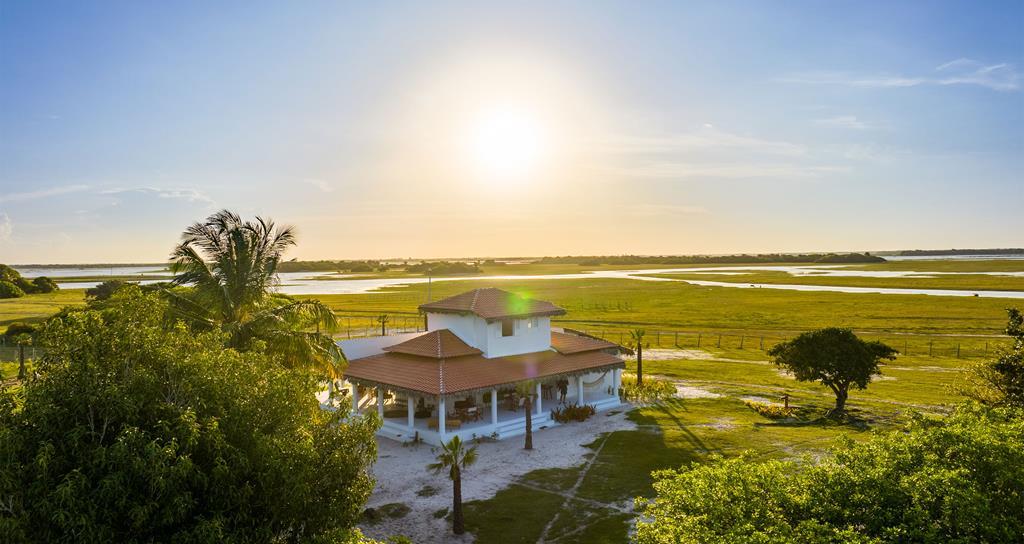
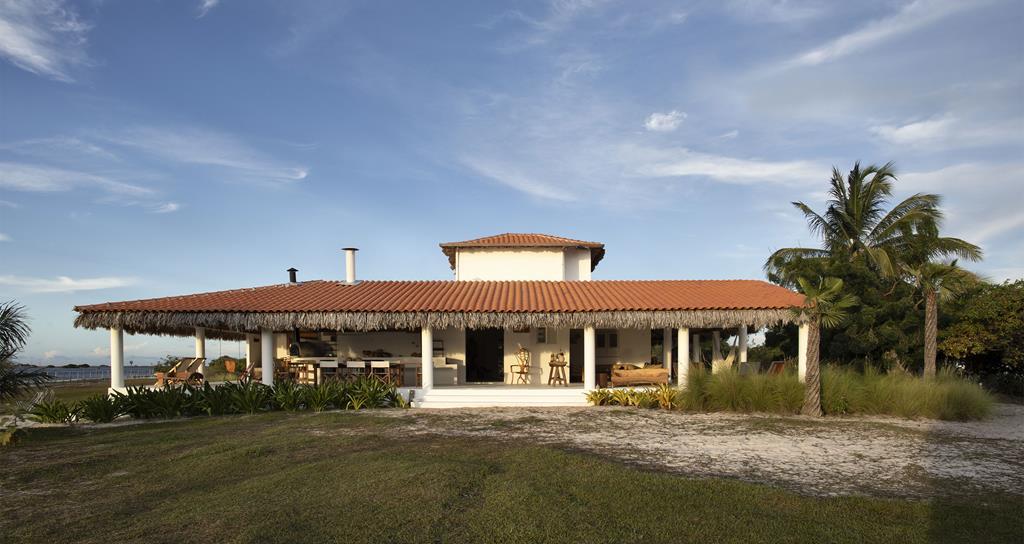
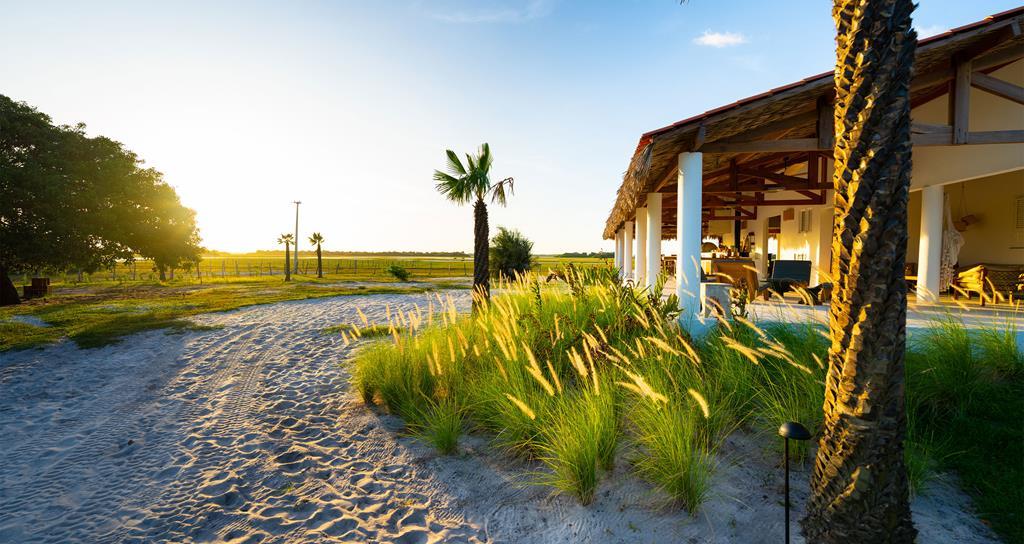
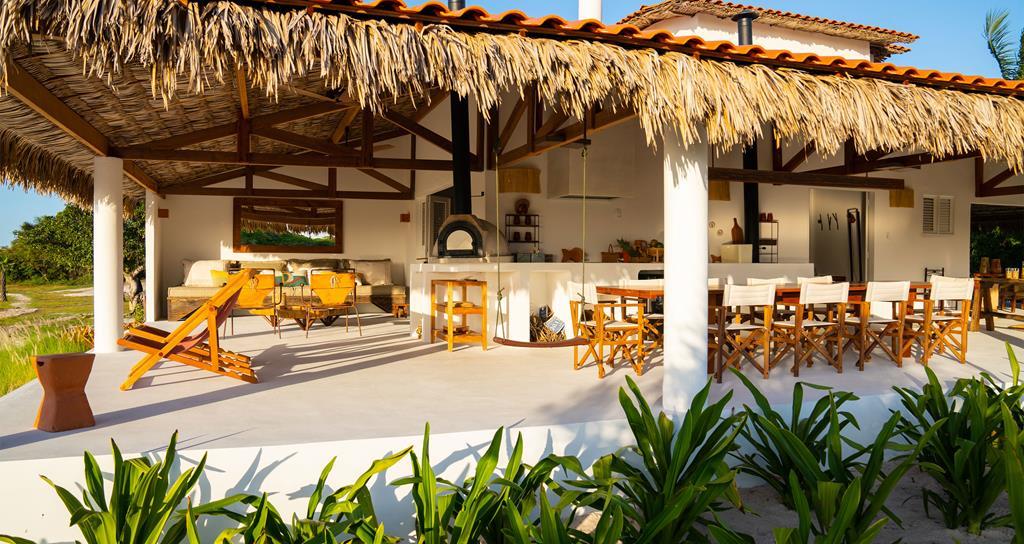
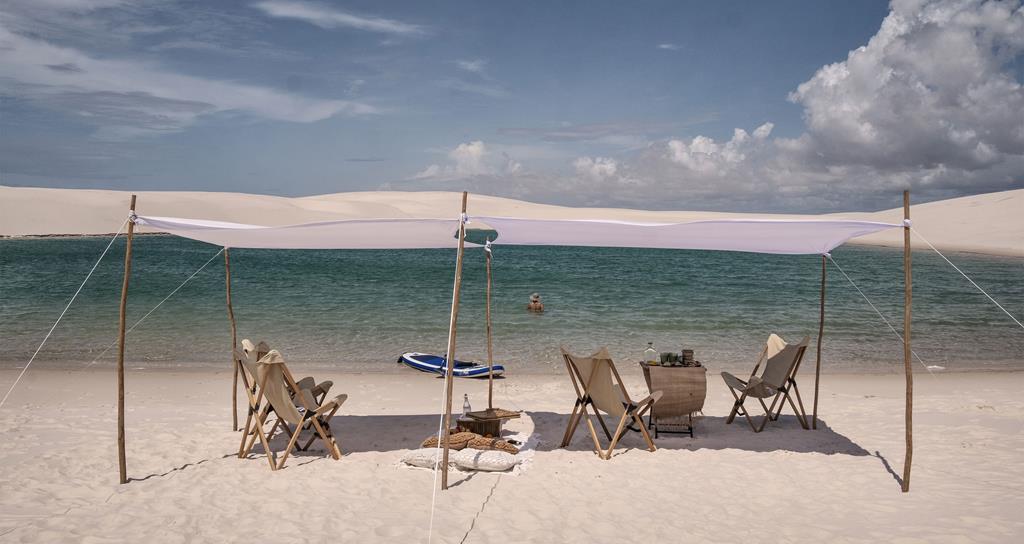
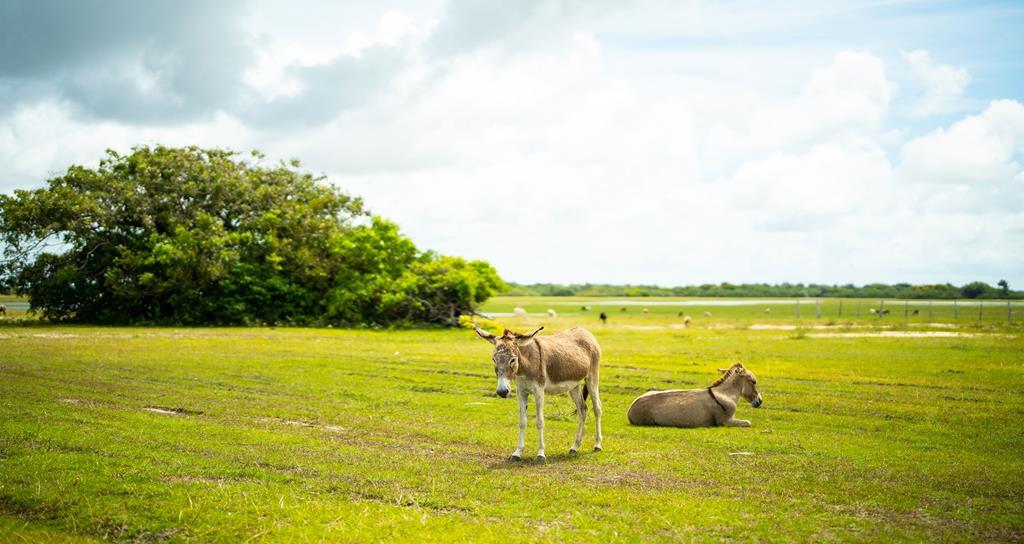
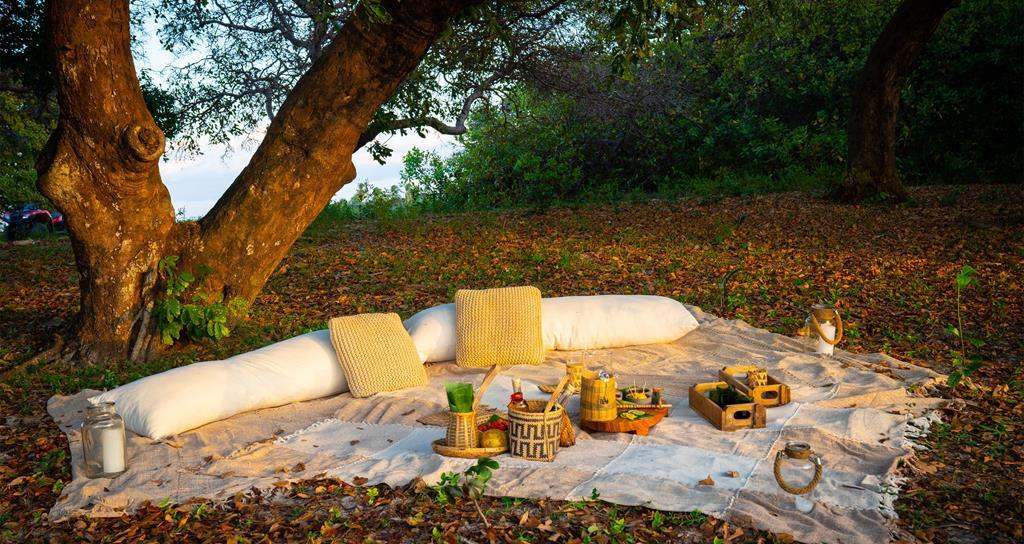


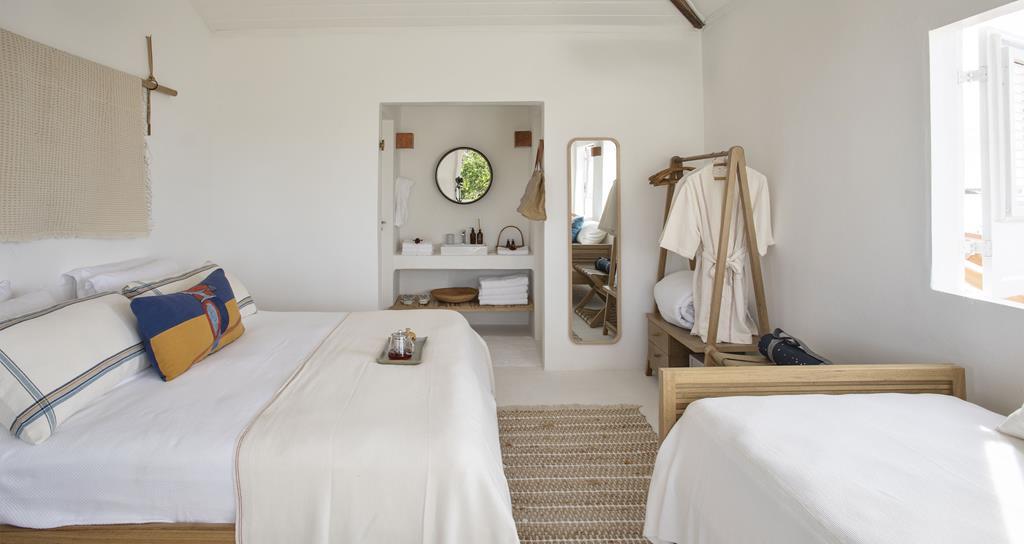
What makes OIÁ remarkable isn’t simply the design elements, however, but the combination of Linhares’ aesthetic sensibility and Pérez’s insider knowledge of the world’s best hotels. The result feels almost like the villa rental of your dreams, but with personalised five-star service to match. The kitchen, run by chefs Luis Felipe Kern Streppel and Jessica Ambrosio, does a brilliant modern-Brazilian thing with ingredients plucked from the orchards and vegetable plots of the estate. Delicious service details abound. Guests returning from excursions to the dunes are offered cool face towels to freshen up with. Caipirinhas of cashew fruit or passionfruit appear in your hand almost before you realise you need one. The afternoon breeze mingles with the gentle bossa nova drifting from the speakers.
OIÁ would be a fabulous place to stay even without the advantage of its location. From here, the legendary Lençóis lie just a few kilometres away, reached by the vehicle of choice for this unique terrain: a 4x4 pick-up truck with covered seating in the back and padded guard rails for leaning on as you take in the extraordinary views.
Bumping along the sandy tracks on the fringes of the national park, you soon become aware of the scale of this particular beauty spot. The park covers an area of around 150,000 hectares – twice the size of New York City. After the heavy rains of February through May have replenished the water table, lagoons appear (as many as 8,000 of them, by one estimation) as if by magic between the dunes, shimmering turquoise in the sun like a strange simulacrum of the Caribbean. Though tourist groups pitch up in their 4x4s from Barreirinhas and Atins, they tend to aim for the lagoons at the edge of the park, leaving the rest of its huge extension empty and undisturbed.

Despite all you may have imagined or heard about the Lençóis, the reality still takes you by surprise. The dunes are composed of a white sand as fine as caster sugar, forming architectural shapes whose flattened peaks and curvilinear edges are permanently sculpted and refashioned by the wind. Being here is in many ways a counterintuitive experience. For one thing, you’d think the sand would be too hot to walk on barefoot, but, in fact, it’s no more than pleasantly warm (though the wearing of neoprene socks is advised for the sake of comfort). The water in the lagoons isn’t salty, which you half expect, but fresh. The dazzling whiteness of the Lençóis and their gently undulating forms might remind you at times – especially under the eerie light of a full moon – of a snow-covered landscape somewhere around the Arctic Circle.
The tropical sun beats down, making sunblock and long-sleeved garments de rigueur, though the dunes are permanently fanned by Atlantic breezes. For a deep dive into the heart of the Lençóis, OIÁ takes guests on a guided hike from Atins across a spectacular and little-traversed swathe of the park, stopping for dips in the crystal-clear lagoons and regular snacking on Brazilian goodies like sun-dried banana and roasted cashew nuts. As night falls, you arrive at Queimada dos Britos, an oasis hamlet of goatherders who have shyly turned their hand to guest accommodation in palm-roofed shacks, serving char-grilled prawns and Chilean chardonnay for dinner.
There are moments that immediately go onto the mind’s hard disk. Yomping down the steep side of a high dune, the sand squeaking and groaning as you go, splashing down into the cool blue waters of the lagoon below. Watching the sun set, then the moon rise over the snowy-white sands, from a deckchair at the summit of a particularly majestic dune, caipirinha in hand. Among the range of emotions provoked by the Lençóis Maranhenses, you’re likely to feel awe and amazement, pleasure and puzzlement, perhaps a sense of privilege. But disappointment? Unlikely.
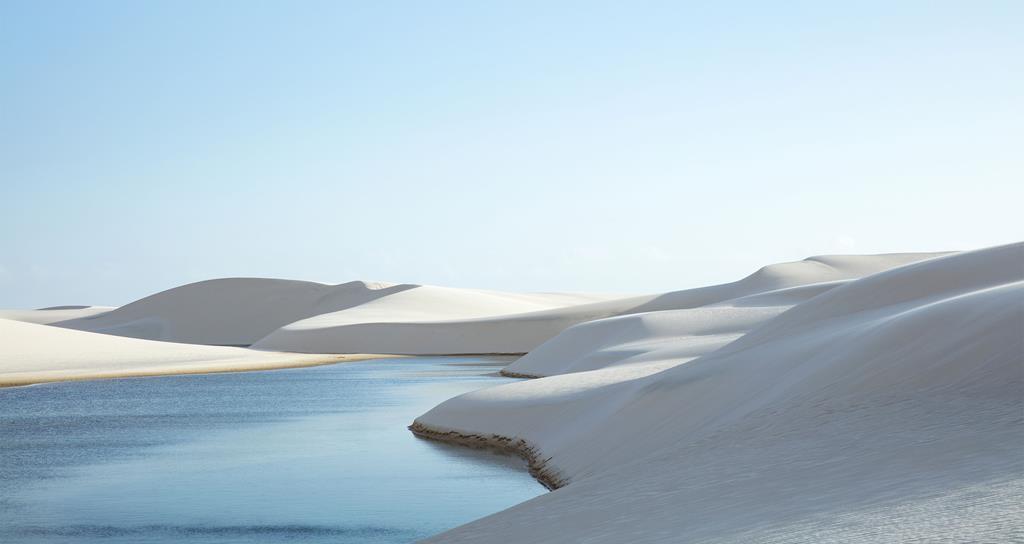
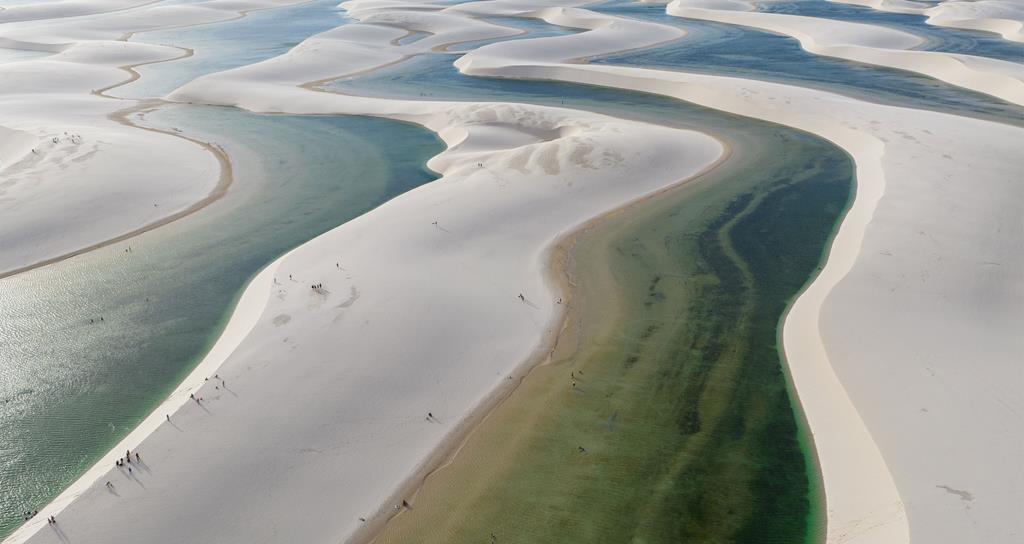
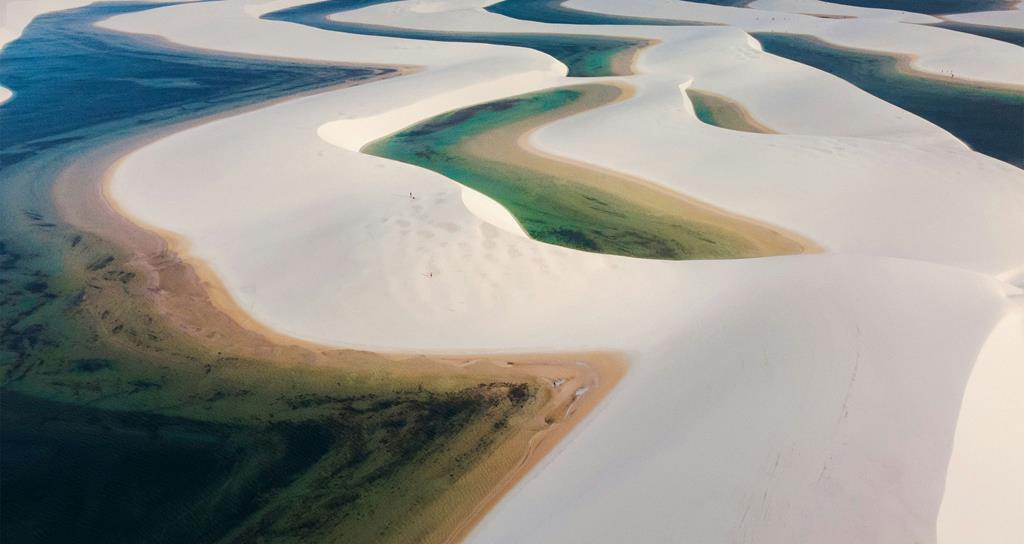
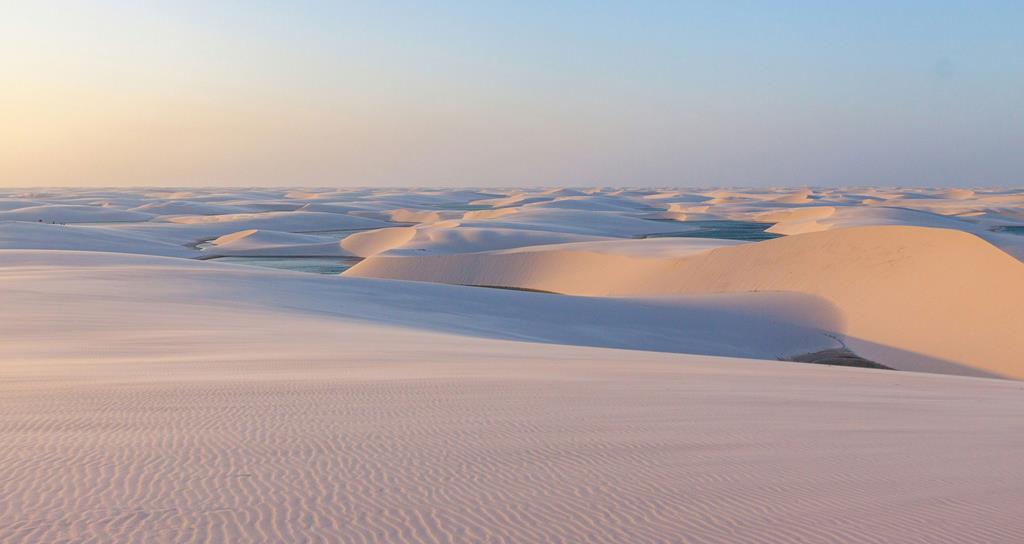
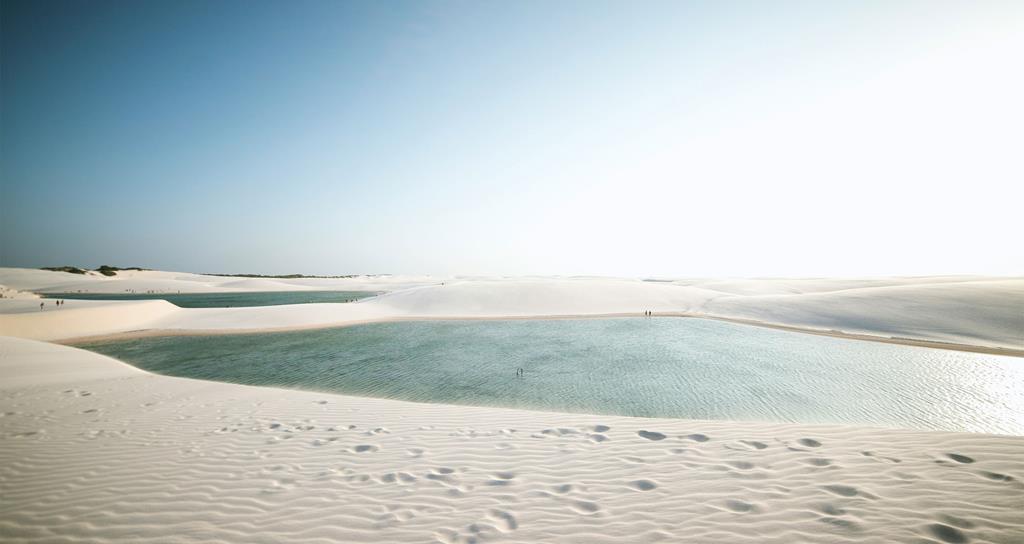
Photo credits: Unsplash(5), iStock(5), Alexandre Suplicy(10), Ruy Teixeira(5)















